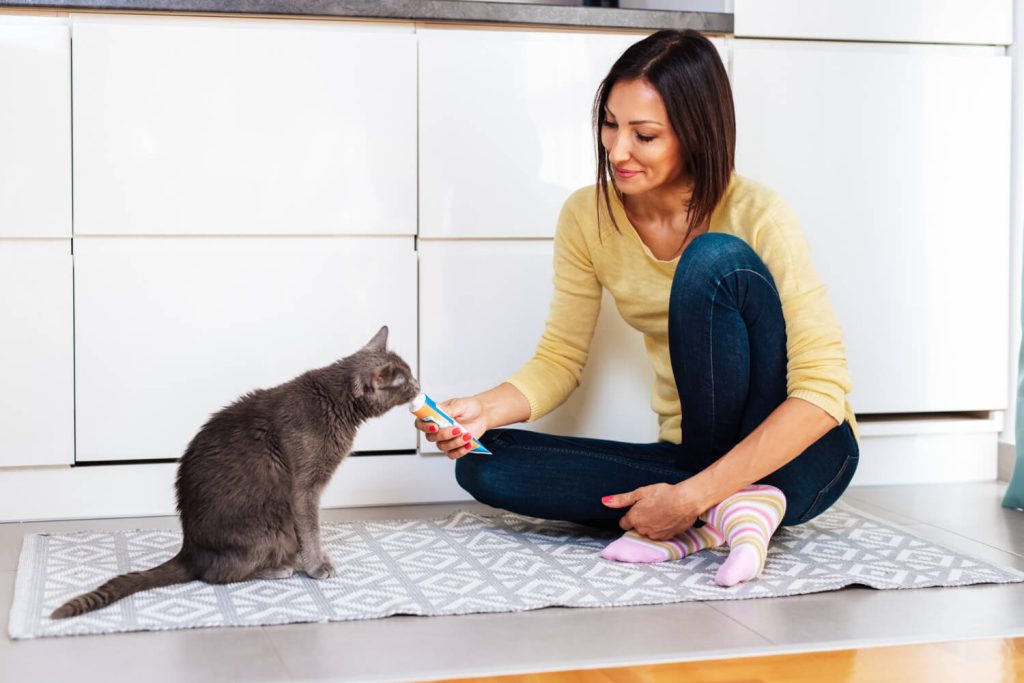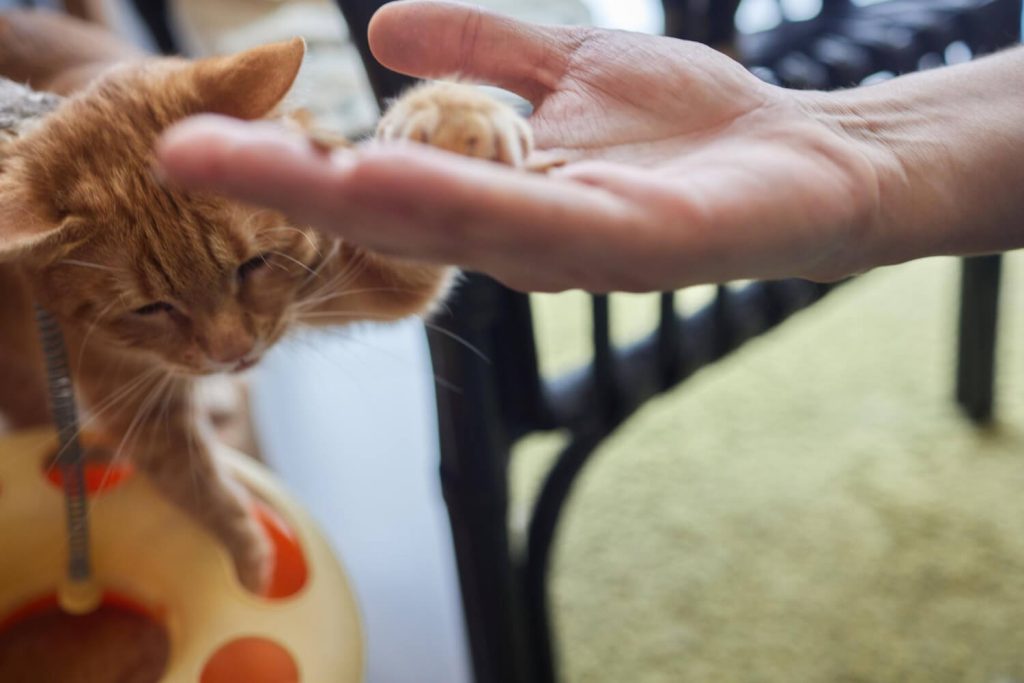How Do You Train a Cat Without Losing Your Mind?
Recently, I wanted to “try” to make Feliciano do certain tricks or just listen to my commands. Like, “Stop eating from trash”. Yes, mostly because of this I wanted to learn how do you train a cat without losing your mind.
Don’t worry, I feed him enough, he just can’t resist the urge to eat what he’s not supposed to. I have already talked about this problem in a few of my blogs, so you’ll probably understand this issue if you own a cat, or the cat owns you.
So I know that training your cat might seem tough, but it’s doable and can even be fun. Cats have their own way of thinking, so you can’t train them like dogs.
But contrary to popular belief, training a cat is not only possible but can also be a rewarding experience for both humans and cats.
While it may not be as straightforward as training a dog, understanding the unique behaviors and psychology of cats can make the process much smoother.
Key Takeaways
- Train cats with treats & praise, not commands.
- Short, fun training sessions are best for cats.
- Clickers can help cats connect actions with rewards.
- Patience is key! It takes time for cats to learn.
- Training builds a stronger bond between you and your cat.
- Key Takeaways
- Why Training a Cat is Different from Training a Dog
- How Do You Train a Cat: Simple Tricks and Techniques
- Troubleshooting Common Issues
- FAQ
- Why is training a cat different from training a dog?
- What are the basics of cat training, including simple tricks and techniques for success?
- How can I deal with common issues like scratching furniture or biting?
- How do I train an older cat?
- What rewards come from training your cat and building trust together?
Why Training a Cat is Different from Training a Dog
Training a cat requires a different approach compared to training a dog. Dogs are descended from pack animals and have a natural instinct to please their leaders.
They respond well to commands and are eager to earn praise or treats. Cats, on the other hand, are instinctively solitary hunters. Cats are more independent and less motivated by obedience.
Instead of following orders, they learn through positive reinforcement. This means you should reward desired behaviors with treats, praise, or petting.

Yelling or punishment will only damage your relationship with your cat.
How Do You Train a Cat: Simple Tricks and Techniques
Teaching your cat tricks is a fun way to bond and enrich their lives. The key to success lies in understanding how cats learn which was best explained in the paragraph above.

Start with something simple, like teaching your cat to “sit”. Hold a tasty treat above their head and slowly move it backward. As their rear end dips towards the ground, say the word “sit” in a gentle voice.
When their belly touches the floor, click a clicker (optional) and immediately reward them with the treat and praise. Remember, cats have short attention spans, so keep the training short and sweet, aim for 5-10 minutes, 2-3 times a day.
Litter box training is another important aspect of cat care. Most kittens will pick up on using the litter box by observing their mother. However, if your cat is having accidents, there could be a reason.
Ensure the litter box is clean, placed in a quiet location, and filled with litter your cat finds comfortable. Whenever your cat uses the litter box correctly, be sure to praise them or offer a small treat to reinforce the positive behavior.
Patient Persistence Pays Off
Training a cat takes time, effort, and a lot of trial and error. It’s essential to establish a consistent training schedule and stick with it, even when progress seems slow.
Each cat is unique, and what works for one might not work for another. Be patient, and don’t be discouraged by setbacks or challenges along the way.
Troubleshooting Common Issues
Scratching furniture, biting, and other undesirable behaviors are common challenges when training a cat. To address these issues, it’s essential to understand the underlying reasons behind your cat’s behavior.
Scratching, for example, is a natural instinct for cats to sharpen their claws and mark their territory. Providing appropriate scratching posts and toys can help redirect this behavior and save your furniture.
For older cats or cats with existing behavior problems, training may require extra time and effort. Take a gradual approach, and don’t expect overnight results. With patience and perseverance, even the most stubborn cats can learn new behaviors and habits.

While training a cat can be a challenging task, the rewards are well worth the effort. The real reward lies in building a deeper bond and trust with your furry companion.
Training keeps your cat mentally stimulated, preventing boredom and bad behavior. Plus, you get to learn your cat’s quirks and preferences, making training a fun way to connect.
So, invest a little time in training your cat, it’s really worth it at the end of the day.
FAQ
Why is training a cat different from training a dog?
Cats and dogs have distinct behaviors and motivations. Dogs are pack animals and respond well to hierarchical structures, while cats are more independent and driven by their own desires. Therefore, training approaches need to be tailored to suit each species’ unique characteristics.
What are the basics of cat training, including simple tricks and techniques for success?
Start with basic commands like “sit” and “come” using treats and clicker training. Teach your cat to use the litter box consistently and encourage desired behaviors through positive reinforcement.
How can I deal with common issues like scratching furniture or biting?
Provide appropriate scratching posts and toys to redirect your cat’s natural behaviors. Use deterrents like double-sided tape or citrus scents to discourage unwanted behavior. For biting, avoid rough play and provide plenty of interactive toys to channel their energy.
How do I train an older cat?
Older cats can still learn new tricks with patience and persistence. Focus on positive reinforcement and keep training sessions short and engaging. Be mindful of any physical limitations and adjust training accordingly.
What rewards come from training your cat and building trust together?
Training your cat strengthens the bond between you and your feline friend. It provides mental stimulation, enhances communication, and fosters a sense of trust and companionship. Additionally, a well-trained cat is happier, healthier, and easier to manage.







